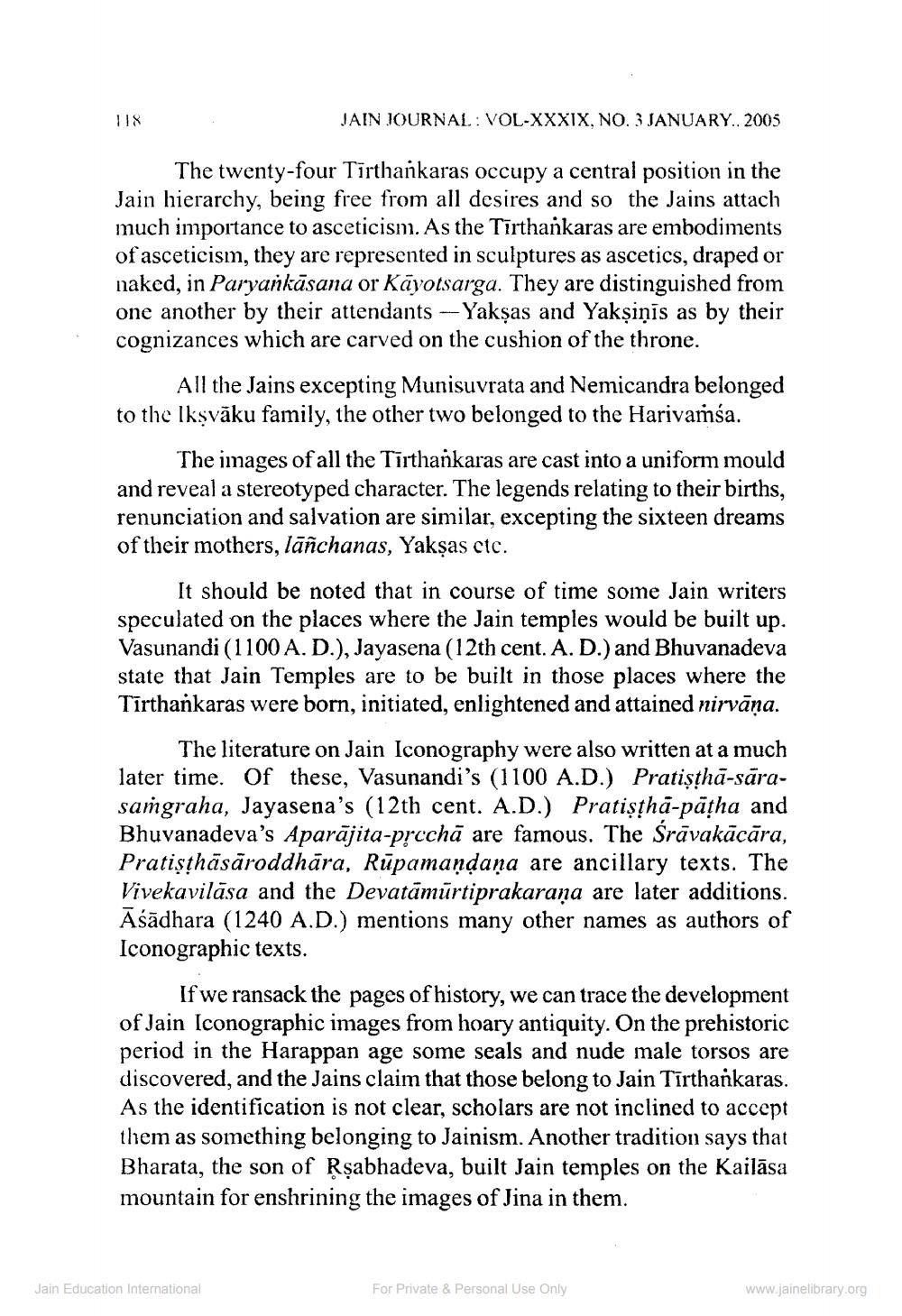________________
118
JAIN JOURNAL : VOL-XXXIX, NO. 3 JANUARY.. 2005
The twenty-four Tīrthankaras occupy a central position in the Jain hierarchy, being free from all desires and so the Jains attach much importance to asceticism. As the Tīrthankaras are embodiments of asceticism, they are represented in sculptures as ascetics, draped or naked, in Paryankāsana or Kāyotsarga. They are distinguished from one another by their attendants - Yakşas and Yakṣiṇīs as by their cognizances which are carved on the cushion of the throne
All the Jains excepting Munisuvrata and Nemicandra belonged to the Ikşvāku family, the other two belonged to the Harivamsa.
The images of all the Tīrthankaras are cast into a uniform mould and reveal a stereotyped character. The legends relating to their births, renunciation and salvation are similar, excepting the sixteen dreams of their mothers, lāñchanas, Yakşas etc.
It should be noted that in course of time some Jain writers speculated on the places where the Jain temples would be built up. Vasunandi (1100 A.D.), Jayasena (12th cent. A. D.) and Bhuvanadeva state that Jain Temples are to be built in those places where the Tīrthankaras were born, initiated, enlightened and attained nirvana.
The literature on Jain Iconography were also written at a much later time. Of these, Vasunandi's (1100 A.D.) Pratisthā-sārasaṁgraha, Jayasena's (12th cent. A.D.) Pratişthā-pātha and Bhuvanadeva's Aparajita-prochā are famous. The Srāvakācāra, Pratisthāsāroddhāra, Rūpamandaņa are ancillary texts. The Vivekavilāsa and the Devatāmūrtiprakaraņa are later additions. Asādhara (1240 A.D.) mentions many other names as authors of Iconographic texts.
If we ransack the pages of history, we can trace the development of Jain Iconographic images from hoary antiquity. On the prehistoric period in the Harappan age some seals and nude male torsos are discovered, and the Jains claim that those belong to Jain Tīrthankaras. As the identification is not clear, scholars are not inclined to accept them as something belonging to Jainism. Another tradition says that Bharata, the son of Rşabhadeva, built Jain temples on the Kailāsa mountain for enshrining the images of Jina in them.
Jain Education International
For Private & Personal Use Only
www.jainelibrary.org




